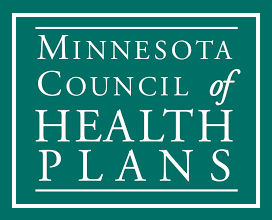Understanding Insurance
For most Minnesotans, you or your employer pays a premium each month. The insurance company pays medical bills with that money. If your bills are more than you’ve paid in premiums, your bills still get paid. That monthly payment also funds services highlighted below,
Medicare, Medicaid and MinnesotaCare work the same way. The federal or state government pays the insurer each month and the insurer pays medical bills and provide the help below.
Sometimes, employers pay medical bills with their own money. They hire health insurance companies to do administrative services such as sending out health insurance cards, contracting with doctors and hospitals and answering questions from employees. This kind of insurance is called self-funded.
- When Minnesota passes a new law, why doesn't my health insurance follow it?
- What do I get for the money I pay each month?
- I pay a lot of money, even when I don't need care. That doesn't seem right.
For most of us, rules for our health insurance are set in Washington, D.C., not in St. Paul.
While Medicare and Medicaid laws and the Affordable Care Act regulate almost all health insurance, some insurance is governed by state law as well.
Here’s how it works. Minnesota’s lawmakers have direct influence on the way health insurance works for:
- about 25 percent of Minnesotans who get our health insurance through small “fully insured” employers or buy it on our own.
- about 17 percent of Minnesotans who get our insurance through Medical Assistance, Minnesota’s name for Medicaid, or MinnesotaCare.
But health insurance for nearly 58 percent of Minnesotans does not have to follow state law. One category of insurance, offered mostly by large corporations, colleges and government, is called self-insured. That means the employer uses its funds, not an insurance company’s, to pay medical expenses. Federal, not state, laws govern this insurance. And of course the federal government sets the rules for Medicare, national health insurance.
How do you tell if your insurance through work is governed by Minnesota law? One clue is the insurance company’s name will be on your card, but probably not your employers. As always, call the number on the back of your card and ask questions.
- Reducing our medical expenses by negotiating discounted rates with doctors, hospitals, and other providers of care; by preventing fraud and abuse; and by finding new ways to minimize paperwork and increase access to information
- Protecting us from financial ruin if we are badly injured or become very ill
- Providing information that helps us live healthier lives, manage our health troubles, and pursue our own wellbeing
- Helping us stay well with preventive services, routine check-ups and incentives like health-club discounts
- Helping us navigate health care choices with advice and support from caring nurses, pharmacists and other medical professionals
- Improving the care we get by making sure it meets quality standards—and by creating new models of payment that pay people who provide care not for the quantity of service, but for the quality of our health
- Keeping our communities well by working together with community organizations and activists to make social and environmental conditions healthier
- Enabling businesses to keep their employees healthy, happy and productive
